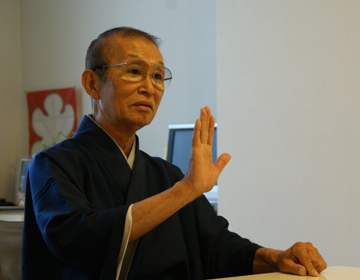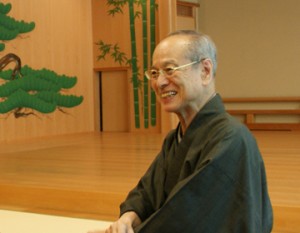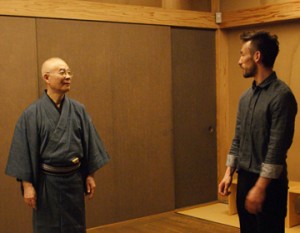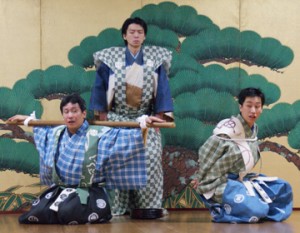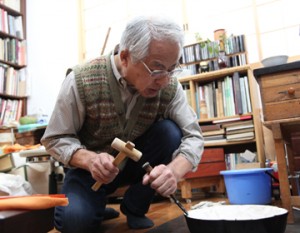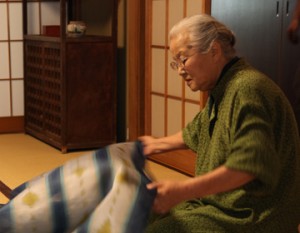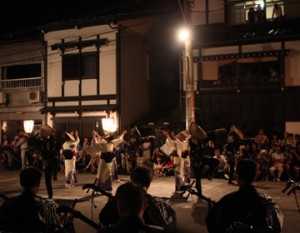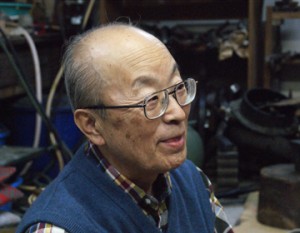Kiyomoto-bushi, with 200 years of history
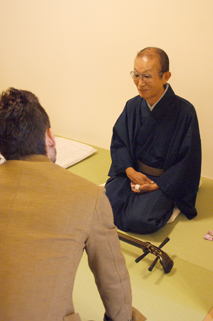
Kiyomoto-bushi was originally a part of the Joruri school. It began when Kiyomoto Endayu appeared in kaomise at the Kabuki Ichimuraza, and introduced himself by that name. It developed later as music accompanying ”kabuki”. It has a lyrical elegance deriving from Bungobushi.
It became widely known to the point that Kiyomoto represents Edo Joruri.
Although it is officially an accompaniment for stage performances, it is also enjoyed as music during ”kabuki” dances, even gaining a following for the Kiyomoto himself.
That is the sophistication and elegance of the 200 year-old Kiyomoto-bushi melody.
Allowing the songs to shine
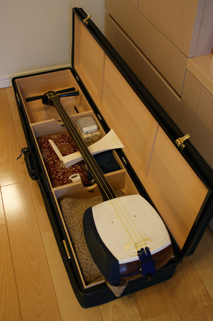
We talked to Eizo Kiyomoto of Kiyomoto-bushi, who was designated an Important Living Cultural Treasure in 2003 for Kiyomoto shamisen. Being attracted to the tone of Kiyomoto shamisen he heard in his childhood, he entered apprenticeship under Kiyomoto Eijiro the 3rd (later Kiyomoto Eijuro) at the age of 15 in 1951. Two years later, he made his first stage appearance. He has been awarded the Arts Award Festival and numerous other awards.
At the beginning of our conversation about shamisen, he told us ”I believe Kiyomoto shamisen makes the songs stand out. Therefore it is quite different from nagauta, where shamisen is the focal point. It is also different from Tsugaru jongara bushi. The Kiyomoto shamisen is played to bring the songs to the forefront. That’s what we always keep in our minds as we play.”
Shamisen and Song Communicate with each other
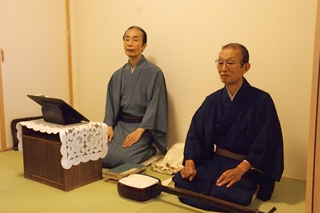
We had an opportunity to hear a performance. Eizo Kiyomoto invited his younger brother, Kiyomoto Yoshijudayu to join us in the interview. Yoshijudayu, as can be seen from his name, is a dayu, or a singer. We were treated with the opportunity to hear a live performance of the program ”Michitose Shinobiai Haruno Yukidoke”.
We were stunned by the graceful music.
”The story itself is the Kiyomoto specialty,” he said as he explained the setting. We were completely taken in leading Nakata to comment, ”You mentioned earlier that ”shamisen” makes the songs stand out, and I understood what you meant by this. It sounded like a dialogue.”
””Shamisen” plays along with the song, but it can also create the right mood for the song. For instance, the ”shamisen” plays a certain phrase, and the song will reply by in a way to match that phrase. So it really is a dialogue.” Eizo Kiyomoto explained.



